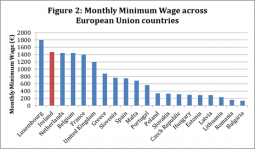
The New Working Poor – Dave discusses new findings that suggest Ireland is at work again but at low wages & becoming a more unequal society.
Employment is widely viewed as pathway out of poverty, and with the live register in decline and more people at work it would not be unreasonable to presume that poverty rates should also fall. However a closer examination and newly available data has calls this into question.
The latest CSO poverty figures show that 11.7 % of people in poverty are working, and on top of this the latest Department of Social Protection annual report shows that in 2013 the number of working families in receipt of Family Income Supplement (FIS) increased by almost 30% to 42,000 low-income families, supporting over 90,000 children.
This fact raises the question, if all these people are working and are still in poverty; just how good are all these new jobs?
The latest quarterly report of the Neven Economic Research Institute has highlighted links between low wages, part time work and insecure forms of employment. The report found that:
- One in four employees earns less than the living wage of €11.45 per hour and a full 30% have earnings below the Eurostat low pay threshold of €12.20 per hour
- The average hourly wage for employees is just over € 20 per hour but half of all workers earn less than €16.63 per hour
- 60% of the low paid are female and one in three women are of risk of been low paid.
- One in four of the low paid work in wholesale and retail, and nearly one in six are employed in the accommodation and food sectors.
- 70% of employees working in agriculture, forestry and fishing are low paid.
In an earlier report submitted to Oireachtas joint committee on jobs enterprise and innovation. Michael Collins of NERI attempted to place these low wage levels in context. Writing about the report Collins said society should:
“Consider low wage rates not just in the context of competitiveness and competition but also in the context of income adequacy and living standards. In effect, it reflects a belief that across society’s individuals working full-time should be able to earn enough income to enjoy a decent standard of living.”
He further goes on to place these low wages in a wider context:
“The distribution of direct income in Ireland is heavily skewed. The top 20% [ of income earners] receive 25 times the share of the bottom 20%.The scale of that inequality continues to place large pressure on the redistributive system, and in particular the social welfare system, to even out the income distribution – something it does well, but at an ever increasing cost”.
This massive gap in earnings between those at the top and those at the bottom calls into question the nature of the oft mentioned economic recovery and begs the question, If people down below are not being paid a liveable wage while those upstairs are enjoying such vast earnings, who is this recovery benefiting?








